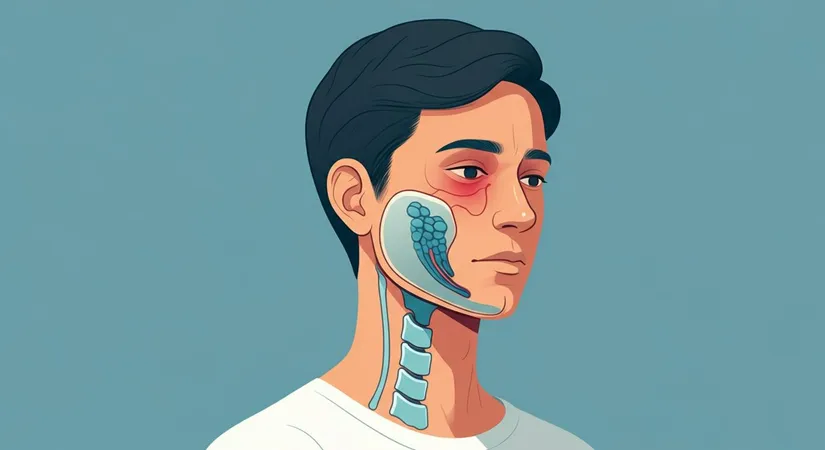Gate Control Theory of Pain: Revolutionizing Pain Management Techniques
Uncover the science behind the Gate Control Theory of Pain and its influence in reshaping modern pain management methods.
The Gate Control Theory of Pain has fundamentally revolutionized our understanding of how pain can be managed effectively. Developed in the 1960s by Ronald Melzack and Patrick Wall, this theory suggests that our experience of pain is not only a direct result of painful stimuli but also involves complex neurological processes that either facilitate or inhibit pain perception. This groundbreaking idea has paved the way for innovative pain management techniques that have significantly improved the quality of life for many patients.
Exploring the Psychological Dimensions of Pain Perception
The Role of Emotions in Pain Experience
Emotions significantly influence how we perceive pain. For instance, anxiety can amplify pain sensations, while positive emotions might reduce them. This interplay suggests that emotional states can modulate the neurological 'gate' described in the Gate Control Theory of Pain.
Impact of Stress on Pain Modulation
Stress is another psychological factor that affects pain perception. High stress levels can open the neurological gate, intensifying pain signals. Conversely, stress reduction techniques like meditation can help close the gate, alleviating pain.
Psychological Strategies for Pain Management
- Cognitive-behavioral therapy (CBT) helps reframe negative thoughts, reducing pain perception.
- Mindfulness practices enhance awareness and acceptance, potentially closing the pain gate.
- Relaxation techniques, such as deep breathing, lower stress, aiding in pain management.
Implementing Psychological Interventions
- Identify emotional triggers that exacerbate pain through self-reflection or therapy.
- Incorporate stress-reduction practices into daily routines to manage pain effectively.
- Regularly evaluate and adjust psychological strategies to optimize pain relief.
Understanding the psychological dimensions of pain can lead to more effective pain management strategies. For example, a study found that individuals practicing mindfulness reported a 57% reduction in pain intensity. This highlights the potential of psychological interventions in closing the neurological gate and mitigating pain.

Neural Pathways and Their Role in Pain Modulation
Understanding the Interaction of Nerve Fibers
The Gate Control Theory of Pain highlights the interaction between large-diameter and small-diameter nerve fibers. Large-diameter fibers, which carry non-painful stimuli, can inhibit the transmission of pain signals carried by small-diameter fibers, effectively modulating pain perception.
Influence of External Stimuli on Pain Perception
External stimuli such as heat or pressure can influence the gate mechanism in the spinal cord. For example, applying a warm compress to a sore muscle can activate large-diameter fibers, reducing pain by closing the gate to pain signals.
Factors Affecting Neural Gate Mechanisms
- Physical activity can enhance large-diameter fiber activity, reducing pain perception.
- Temperature changes, like cold packs, can alter nerve signal transmission, affecting pain.
- Massage therapy stimulates non-painful nerve fibers, potentially closing the pain gate.
Steps to Utilize Gate Control in Pain Management
- Identify the type of pain and its triggers to select appropriate stimuli.
- Apply non-painful stimuli, such as heat or massage, to the affected area.
- Monitor pain levels and adjust stimuli to optimize pain relief.
Research indicates that engaging large-diameter fibers can significantly reduce pain perception. For instance, a study found that massage therapy decreased pain intensity by 30% in chronic pain patients, illustrating the practical application of the Gate Control Theory in pain management.

Innovative Applications of Gate Control Theory in Modern Medicine
Advanced Techniques in Pain Management
Modern medicine has embraced innovative techniques that utilize the Gate Control Theory of Pain to manage discomfort effectively. For instance, spinal cord stimulation (SCS) involves implanting a device that sends electrical impulses to the spinal cord, disrupting pain signals. This method has shown a 50% reduction in pain for many patients.
Integrating Technology with Traditional Practices
Combining technology with traditional practices offers new avenues for pain relief. Virtual reality (VR) therapy, for example, immerses patients in calming environments, distracting them from pain and potentially closing the neurological gate. Studies indicate that VR can reduce pain perception by up to 30%.
Key Benefits of Technological Integration
- Enhanced patient engagement through interactive experiences, improving overall treatment outcomes.
- Non-invasive nature of VR and SCS minimizes side effects compared to pharmaceutical interventions.
- Customizable treatment plans tailored to individual pain profiles, increasing efficacy.
Implementing Technological Solutions in Pain Management
- Assess the patient's pain type and suitability for technological interventions.
- Introduce VR or SCS as part of a comprehensive pain management strategy.
- Continuously monitor and adjust the approach based on patient feedback and outcomes.
These innovative applications of the Gate Control Theory highlight the potential for integrating technology with traditional pain management techniques. As research progresses, these methods could revolutionize how chronic pain is treated, offering hope to millions worldwide.
Holistic Approaches to Chronic Pain Management Using Gate Control Theory
Combining Physical and Psychological Therapies
Integrating physical and psychological therapies offers a comprehensive approach to managing chronic pain. Techniques like TENS and cognitive-behavioral therapy (CBT) can be combined to address both the physiological and emotional aspects of pain, enhancing treatment efficacy.
Role of Lifestyle Modifications in Pain Reduction
Lifestyle changes, such as regular exercise and a balanced diet, can significantly influence pain perception. Exercise stimulates large-diameter nerve fibers, potentially closing the pain gate, while a nutritious diet supports overall nerve health, reducing pain intensity.
Key Lifestyle Changes for Pain Management
- Incorporating daily physical activity to enhance nerve function and reduce pain.
- Adopting a diet rich in anti-inflammatory foods to support nerve health.
- Practicing regular sleep hygiene to improve pain resilience and recovery.
Implementing a Holistic Pain Management Plan
- Assess individual pain triggers and lifestyle factors contributing to chronic pain.
- Develop a personalized plan integrating physical, psychological, and lifestyle interventions.
- Regularly review and adjust the plan based on patient feedback and progress.
Research suggests that a holistic approach can lead to significant improvements in pain management. For example, a study found that patients who combined exercise with mindfulness practices experienced a 40% reduction in chronic pain symptoms, demonstrating the effectiveness of integrating multiple strategies.
Innovative Techniques in Pain Management
Holistic Approaches to Chronic Pain Management
Frequently Asked Questions
What is the Gate Control Theory of Pain?
How does the Gate Control Theory of Pain work in practice?
Can the Gate Control Theory help with chronic pain management?
What are some examples of Gate Control Theory in practice?
How do psychological factors influence pain perception according to the Gate Control Theory?
Discover the Art of Healthy Beauty with estethica. Call Now for Your Free Consultation!
📞 Speak with Our Experts Today!